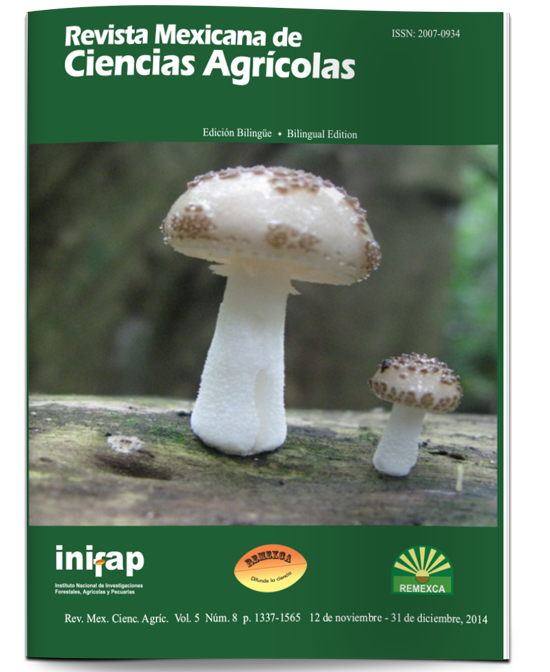Study on the production of wheat technology per agro-system, for pointing out needs of information
DOI:
https://doi.org/10.29312/remexca.v5i8.815Keywords:
Triticum aestivium, agro habitats, stability analysis, stepwise regressionAbstract
Great vision technology generated in the experimental fields may have biases in reality, which can reduce their efficiency and effectiveness. In southern Sonora, stratification production environment is a function of soil type, which can distinguish two main contrasting scenarios; Entisols (alluvium) light in the river bed, heavy on the sides and in flood zones, and Vertisols (clays) dominated by clay; nearby are deeper, then compacted and finally the stony ones. In each of these agro-systems, information on management practices in wheat were collected during 2007 and 2010. With this information, a correlation analysis, stability analysis and, a stepwise regression were performed. In alluvial soils, expanding the range of risks adversely affected yields and the opposite happened in stony clayed soils. Delaying the planting date affected yields in clay soils. The probability of response to additions of phosphorus was low, except in compacted clayed soils. Insecticide applications were on time in alluvial soils, these were flawed in stony clayed soils. Dragging is the only practice that allowed alluvial soils, in the rest it affected adversely the production. In compacted clayed soils, dragging negatively affected wheat production. To the extent that habitat productivity was higher, the quantified variables were less predictable, probably because of the higher availability of information.
Downloads
Downloads
Published
How to Cite
Issue
Section
License
The authors who publish in Revista Mexicana de Ciencias Agrícolas accept the following conditions:
In accordance with copyright laws, Revista Mexicana de Ciencias Agrícolas recognizes and respects the authors’ moral right and ownership of property rights which will be transferred to the journal for dissemination in open access. Invariably, all the authors have to sign a letter of transfer of property rights and of originality of the article to Instituto Nacional de Investigaciones Forestales, Agrícolas y Pecuarias (INIFAP) [National Institute of Forestry, Agricultural and Livestock Research]. The author(s) must pay a fee for the reception of articles before proceeding to editorial review.
All the texts published by Revista Mexicana de Ciencias Agrícolas —with no exception— are distributed under a Creative Commons License Attribution-NonCommercial 4.0 International (CC BY-NC 4.0), which allows third parties to use the publication as long as the work’s authorship and its first publication in this journal are mentioned.
The author(s) can enter into independent and additional contractual agreements for the nonexclusive distribution of the version of the article published in Revista Mexicana de Ciencias Agrícolas (for example include it into an institutional repository or publish it in a book) as long as it is clearly and explicitly indicated that the work was published for the first time in Revista Mexicana de Ciencias Agrícolas.
For all the above, the authors shall send the Letter-transfer of Property Rights for the first publication duly filled in and signed by the author(s). This form must be sent as a PDF file to: revista_atm@yahoo.com.mx; cienciasagricola@inifap.gob.mx; remexca2017@gmail.
This work is licensed under a Creative Commons Attribution-Noncommercial 4.0 International license.



